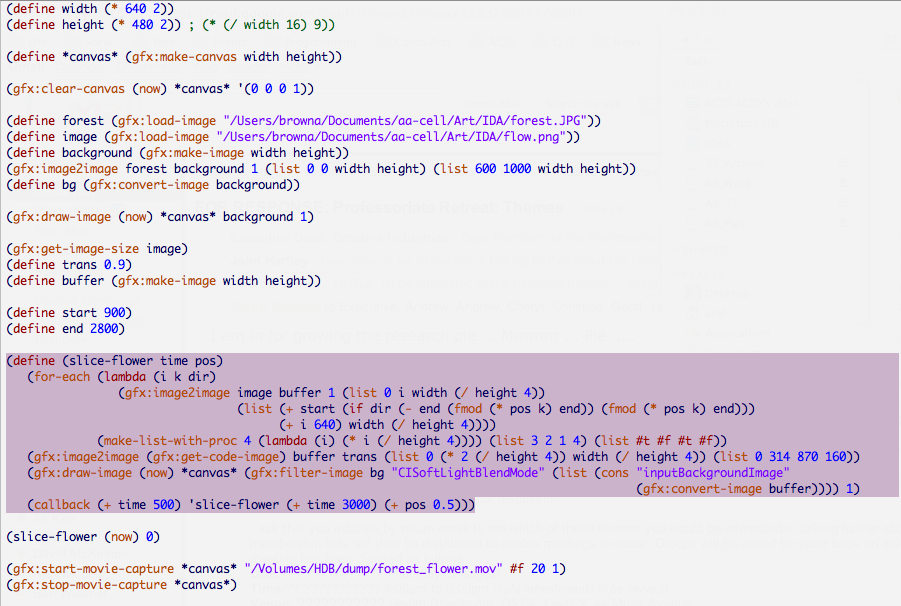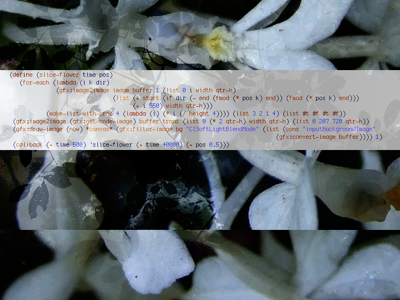Through the work Slice-Flower Andrew Soresne and Andrew R. Brown (aka: aa-cell) explore the aesthetic potential of computational expression. The work is part of a series that explore the potential of algorithms that occupy 10 lines of computer code: a kind of digital haiku. Slice-flower features multiple dichotomies, between slices of a single image, between two semi-transparent images of foliage, between the natural photographic material and the synthetic computer code, and between restfulness and restlessness. The images are segmented into quantised portions, animated, and constantly drifting out of phase, only occasionally realigning.
Exhibited as part of the International Digital Art Project (iDAP) 2007 at QUT, Brisbane, Australia and the Songzhuang Art Museum, Beijing. 28 August – 21 October 2007
Slice-flower was coded in Impromptu, a media art and live coding programming environment developed by Andrew Sorensen. The complete code for the work Slice Flower is shown below in Figure 1. The 10 lines that define the animation process is highlighted. It was this code that was displayed on the work, as can be seen in the still frame image, in the video. The expressive challenge, and thus the research task, was to efficiently express the creation of a multi-part animation the is created from a single still image. This involved dividing the image into slices and shifting them in the image screen at different rates.
The division into slices is achieved with this single line, that specifies parameters for the division.

The selection of a frame location from the slice is performed by this code that uses modulo math to ensure a infinite looping.

These processes are wrapped into a timed recursion, identified by the ‘callback’ function in the last line of the code block. This ability to have strongly times code execution is a somewhat unique feature of the Impromptu development environment used to write the work, which was written by the artists especially for creating time-based media works. The use of these techniques for efficient artistic expression has been published by the artists in relation to generative music (Sorensen and Brown 2007) and has been applied in this work for the first time to visual art composition.
Reference: Sorensen, A. and Brown, A. R. (2007). aa-cell in practice: an approach to musical live coding. International Computer Music Conference. Copenhagen, ICMA: 292-299.


